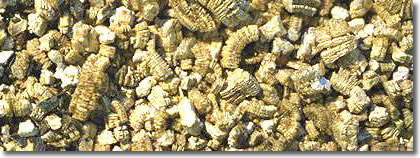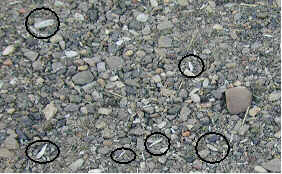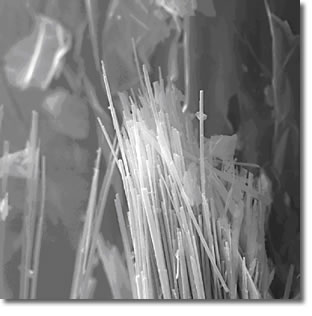Hazardous Sites & Substances
- Hazardous Sites & Substances
- Hazardous Waste Sites
- Topics
- Choose Safe Places Minnesota
- Environmental Exposures Grand Rounds
- Exposure and Health Investigations
- Contact us
Related Topics
- Water Contaminants and Your Health
- Cancer and the Environment
- Fish Consumption Guidance
- Children's Environmental Health
- Air Quality by Topic
- MN Public Health Data Access Portal
Environmental Health Division
Contact Info
Western Mineral Products
Vermiculite Processing Operations in Northeast Minneapolis
Vermiculite ore containing hazardous Libby asbestos was processed in Northeast Minneapolis from 1938-1989. This page contains information about the vermiculite, ways people were exposed, potential health impacts, and publications and resources.
Vermiculite is a naturally occurring mineral used in insulation (brand name, “Zonolite”), construction, and gardening products. From 1924 -1990, most of the world’s supply of raw vermiculite ore came from Libby, Montana. This ore is now known to contain a group of mineral fibers called “Libby Asbestos.”

Ore from the Libby mine was shipped to many processing plants around the country. From 1938 to 1989, ore was processed at the Western Mineral Products plant located at 1720 Madison St. NE in Minneapolis.
At this plant, raw vermiculite was heated until the moisture trapped in the ore caused it to pop like popcorn. After going through this “exfoliation” process, the vermiculite was light and porous, making it suitable for insulation.
Some of the ore was left behind after it was heated. This waste material was known as “crush rock” or “stoner rock.” It was left in piles outside the plant and was free to anyone. We now know that this waste rock was contaminated with asbestos.

Waste ("stoner") rock at the former Western Mineral Products site. Circled are grains of pure Libby Asbestos still visible more than a decade after the plant closed.
In NE Minneapolis, people used the waste rock in their yards, gardens, driveways, barbeques, and other construction projects. Children from the neighborhood also played on piles of “crush rock.”

Asbestos is a mineral fiber that is very toxic if inhaled. It has been known for many years that workers exposed to asbestos suffer from asbestos-related diseases. These diseases generally are not diagnosed until 20-30 years after coming into contact with (exposure to) asbestos.
Asbestos exposure can cause a type of permanent lung damage known as asbestosis, which causes shortness of breath and increases the risk of serious lung infections. Asbestos can also cause lung cancer, and a rare type of cancer known as mesothelioma, which affects the lining around the lungs and abdomen.
One of the most common effects seen on chest x-rays are changes in the lining of the lungs, called pleural plaques and pleural thickening. In some cases, these changes may cause difficulty breathing.
Individual health risk depends on many factors, including how much and how long a person is exposed, age, occupation, smoking and health history. Residents concerned about health problems associated with asbestos exposure should consult their physician.
Health studies have shown an increase in asbestos-related disease among people who have worked in vermiculite mines and processing facilities. There have also been reports of asbestos-related disease among family member of workers, as well as residents of the surrounding community.
In 2001, MDH investigators interviewed residents living near the site to learn more about exposures and possible health risks. Former residents and owners of contaminated properties were also interviewed. This information, together with additional studies from Libby, Montana, has helped to identify the extent of asbestos exposure to workers and the community.
Ways People Were Exposed
- Workers had the highest exposure. Sampling data show that some workers were exposed to asbestos levels that exceed current workplace health standards.
- People who lived with a worker may have been exposed. Workers may have carried asbestos dust home on their clothing. A household member who routinely handled or cleaned the dusty clothing would be exposed to asbestos.
- People who had direct contact with the waste were probably exposed to asbestos fibers. Samples show that the waste contains up to 10% Libby asbestos. Activities such as playing on the piles, or shoveling and moving the waste rock cause asbestos fibers to be released into the air.
- People who install, remove or disturb vermiculite insulation in the home may be exposed. The insulation product has very low or trace levels of asbestos (less than 1%). However, tests show that activities that disturb the insulation can produce measurable levels of fibers in the air.
- People living within 1-2 blocks of the plant while the facility was operating may have been exposed, especially before 1972 when pollution control equipment was installed. A computer simulation suggests that fiber levels in the immediate area were higher than normal urban levels.
- People living on a property with contamination in the driveway or yard may have been exposed to trace amounts of asbestos. Asbestos levels found in driveways and yards were very low. Gardening and landscaping activities generate very low levels of fiber.
Libby asbestos was found and cleaned up on 268 residential properties in Northeast Minneapolis from 2000‐2003. To confirm that the exterior cleanup was sufficient to eliminate exposure to this asbestos, EPA conducted further indoor air and dust sampling in 2008 and soil sampling in 2010. EPA collected and analyzed indoor air and dust samples from residences that previously had Libby asbestos contamination in their yards. Approximately 30 percent (14 out of 48) of residences had detectable, but very low concentrations of Libby asbestos in air, similar to background concentrations. There was no Libby asbestos detected in settled dust samples from any residence. EPA collected soil samples from 40 properties downwind from the Western Minerals Products property to see if there was any residual asbestos contamination from the processing of Libby vermiculite ore. No fibers were detected in any of the soil samples.
Contamination from the Western Mineral plant appears to have been effectively removed from the neighborhood residences and is not expected to harm people’s health. Nevertheless, because asbestos related diseases often have long latency periods (up to 50 years), disease may continue to occur into the future due to past exposure to Libby asbestos from vermiculite processing in Northeast Minneapolis.
Northeast Minneapolis Community Vermiculite Investigation: A Preliminary Report, Newsletter, September 2004 (PDF)
Final Report of the Northeast Minneapolis Community Vermiculite Investigation (NMCVI) and Worker/Household Study: Cohort Identification and Characterization, Health Consultation, November 2005 (PDF)
Cancer Occurrence in the North/Northeast Communities of Minneapolis, 2003-2012 (PDF)
Contact us for information about other publications related to this site.
Health Consultations
- Western Mineral Products Site (a/k/a Western Mineral Products), Minneapolis, MN, Health Consultation, May 2001 (PDF)
- Exposure Assessment: Western Mineral Products Site, Minneapolis, MN, Health Consultation, October 2003 (PDF)
- Western Minerals Products Site: Residual Soil and Indoor Asbestos Assessment, Minneapolis, MN, Health Consultation, February 2012 (PDF)
Minnesota Department of Health
Agency for Toxic Substances and Disease Registry (ATSDR)
Libby Related Site Activities, Health Effects, Medical Community and More About Asbestos
U.S. Environmental Protection Agency (EPA)